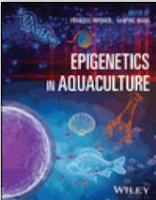Abstract
The current paper presents the first effort to organize a comprehensive review of the Invasive Alien Species (IAS) of Greece. For this purpose, a database was developed with fields of information on the taxonomy, origin, ecology and pathways of introduction of terrestrial, freshwater and marine species. Our database includes a) taxa in the Union’s list that are present in Greece, b) taxa already present in Greece and considered to be invasive, and c) taxa highly likely to enter Greece in the next 10 years and become invasive. The Database served as the starting point for the compilation of the National List of Alien Invasive Species (HELLAS-ALIENS) in compliance with the EU Regulation 1143/2014. Overall, the HELLAS-ALIENS comprises 126 species, i.e. 32 terrestrial and freshwater plant species, 14 terrestrial invertebrates, 28 terrestrial vertebrates, 30 freshwater fishes and invertebrates and 22 marine species. Terrestrial invertebrates, birds and mammals are mainly of Asiatic origin. Most of the terrestrial plants have their native geographical distribution in the Americas (North and South). Most of the freshwater invertebrates and fishes are of North American origin, while the majority of the marine species are of Indo-Pacific origin. The first records of IAS concern terrestrial plant species, and date back to the 19th century, while those in freshwater and marine ecosystems seem to have been systematically recorded some decades later. Regarding the pathways of introduction, most of the taxa arrived in Greece or are expected to arrive through escape from confinement and unaided. The majority of the terrestrial, freshwater and marine species have been evaluated as of High-risk for the indigenous biodiversity and only 3% of the species listed have been evaluated of Low-risk. Our results provide an important baseline for management and action plans, as required by the priorities set by the European Union through the Biodiversity Strategy for 2030.
Keywords: European Union • Invasive Alien Species Regulation • pathways of introduction • risk assessments • temporal trends
(Note: Marmorkrebs are listed as “Taxa not currently present in Greece but highly likely to be introduced within the next 10 years.”)











